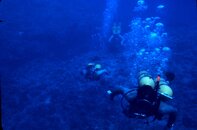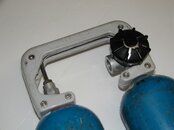To give you an idea of what Luis is speaking about, I put together this force diagrams:
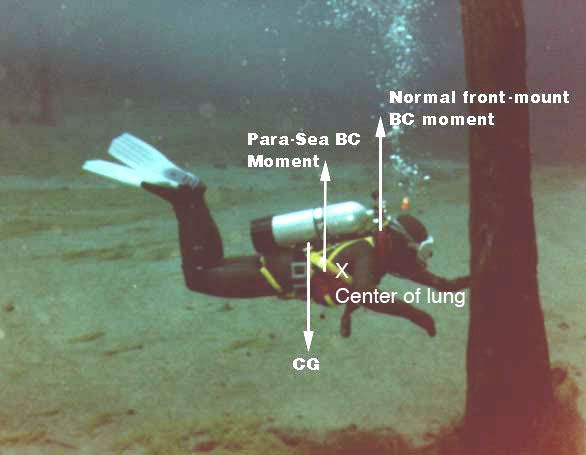
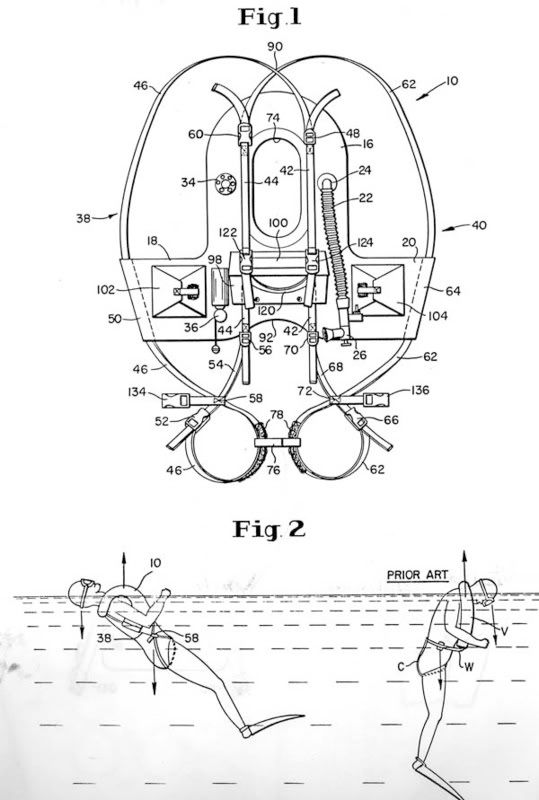
It was meant to show the difference between a horse collar BC (Fenzy is an example) and one I developed and patented, which never made it into the commercial arena. But it shows the situation underwater with a regular horse collar BC.
For a time in the 1980s I had a wet suit with a sandwich of two sheets of 1/8 inch neoprene built into its back with a BC inflator hose that Bill Herter of Deep Sea Bill's, Newport, Oregon built. He started out with an inverted "U" of neoprene, and progressed to a full back sheet of neoprene on the custom wet suits he built. This was perhaps the most streamlined BC ever designed.
One of my favorites, which I still dive, is Dacor's Nautilus BC, which is a hard-shell with a regulator. Once it has been trimmed at depth, its buoyancy does not change with depth.
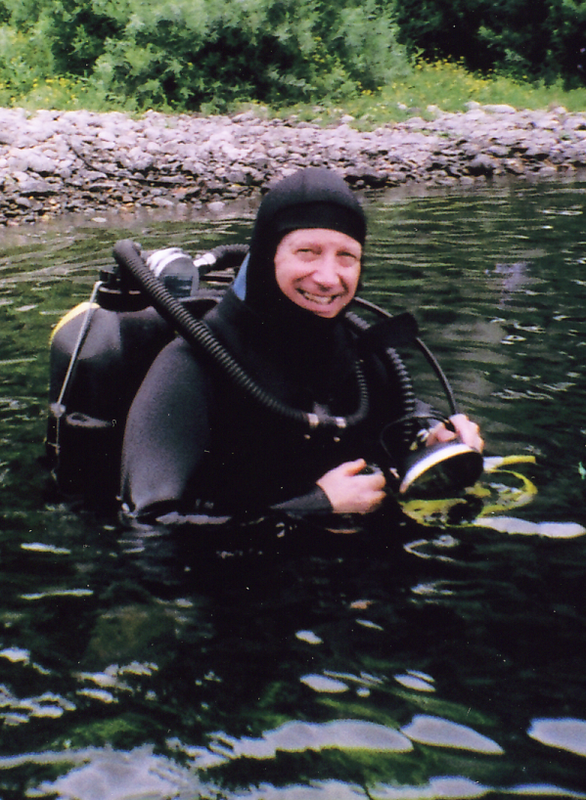
It's a bit awkward in that it is pretty massive, but works very well.
Luis, the earliest BC that I have heard of was in the 1960s when cave divers were apparently using two chlorox bottles, on a line strung under their arms. Anyone else heard of this type of BC?
Concerning doubles, the twin 72s really do not change buoyancy greatly. They are slightly negative when full to neutral when empty in sea water; I don't know how much, but never really had to deal with it much when I wore them (see the attached photo). I don't think we wore weights with them or worried about it much.
SeaRat


It was meant to show the difference between a horse collar BC (Fenzy is an example) and one I developed and patented, which never made it into the commercial arena. But it shows the situation underwater with a regular horse collar BC.
For a time in the 1980s I had a wet suit with a sandwich of two sheets of 1/8 inch neoprene built into its back with a BC inflator hose that Bill Herter of Deep Sea Bill's, Newport, Oregon built. He started out with an inverted "U" of neoprene, and progressed to a full back sheet of neoprene on the custom wet suits he built. This was perhaps the most streamlined BC ever designed.
One of my favorites, which I still dive, is Dacor's Nautilus BC, which is a hard-shell with a regulator. Once it has been trimmed at depth, its buoyancy does not change with depth.

It's a bit awkward in that it is pretty massive, but works very well.
Luis, the earliest BC that I have heard of was in the 1960s when cave divers were apparently using two chlorox bottles, on a line strung under their arms. Anyone else heard of this type of BC?
Concerning doubles, the twin 72s really do not change buoyancy greatly. They are slightly negative when full to neutral when empty in sea water; I don't know how much, but never really had to deal with it much when I wore them (see the attached photo). I don't think we wore weights with them or worried about it much.
SeaRat



